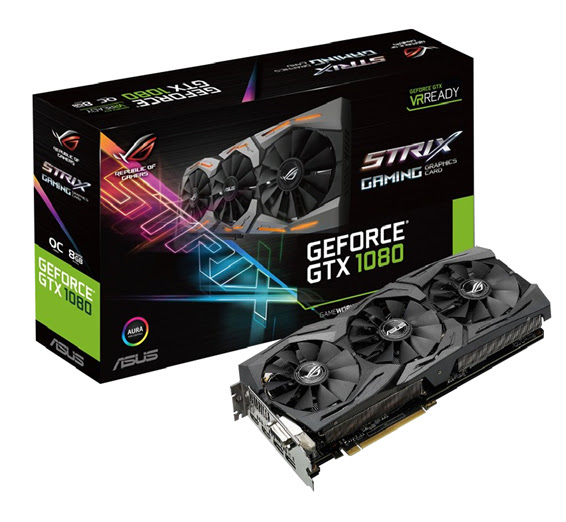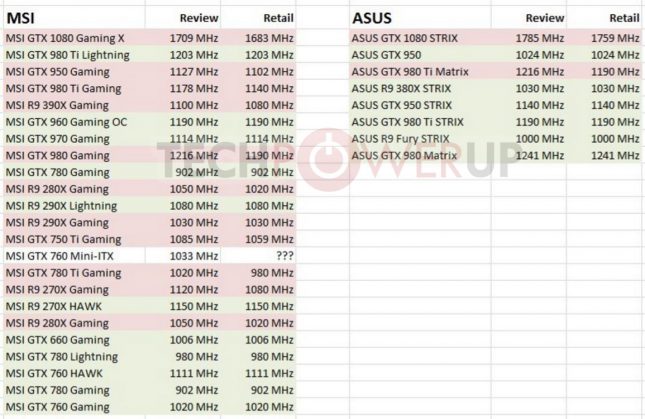ASUS GeForce GTX 1080 Press Samples Sent in OC Mode
ASUS and MSI were accused of sending out NVIDIA GeForce GTX 1080 and GeForce GTX 1070 video cards to the media that weren’t the same as the retail versions that consumers can buy in the store. TechPowerUp went as far as saying that both Asus and MSI had employed “questionable tactics” to ensure their cards looked the best.

It didn’t take ASUS long to release a statement that says that they did indeed ship the press cards with ‘OC Mode’ activated by default. The retail cards shipping to the consumer market are shipping in ‘Gaming Mode’ according to the company. The ASUS GeForce GTX 1070 and GeForce GTX 1080 STRIX cards come with three clock speed profiles; Silent, Gaming and OC.
OFFICIAL STATEMENT
ASUS ROG Strix GeForce GTX 1080 and GTX 1070 graphics cards come with exclusive GPU Tweak II software, which provides silent, gaming, and OC modes allowing users to select a performance profile that suits their requirements. Users can apply these modes easily from within GPU Tweak II.
The press samples for the ASUS ROG Strix GeForce GTX 1080 OC and ASUS ROG Strix GeForce GTX 1070 OC cards are set to OC Mode by default. To save media time and effort, OC mode is enabled by default as we are well aware our graphics cards will be reviewed primarily on maximum performance. And when in OC mode, we can showcase both the maximum performance and the effectiveness of our cooling
Retail products are in Gaming Mode by default, which allows gamers to experience the optimal balance between performance and silent operation. We encourage end-users to try GPU Tweak II and adjust between the available modes, to find the best mode according to personal needs or preferences. For both the press samples and retail cards, all these modes can be selected through the GPU Tweak II software. There are no differences between the samples we sent out to media and the retail channels in terms of hardware and performance.
Sincerely,
ASUSTeK COMPUTER INC.
Very few if any review sites run their full test suite on a retail graphics card at each ‘mode’ that a card has, so we understand why an AIB would do this. At the same time we aren’t sure if they informed reviewers of this situation, but it only takes a few seconds to open the app to change the mode the card is bring run in.
This appears to be something that MSI has been doing for a number of years now as TPU claims that they have been doing it since the GeForce GTX 780 Ti days.
We’ll have to see how this plays out. We can see why some feel this is dishonest, but at the same time the clock speeds are easily reported by GPU-Z and that is a tool almost all reviewers use. We understand that not everyone wants to install an app to get the best clock speeds possible, but that is what you often need to do on modern graphics cards. ASUS and MSI weren’t cheating by raising the clocks higher than they said the card would go as that would have been total BS and big time cheating. Sure, it’s not what you get out of the box, but a couple app clicks later and it is.
The real question that this raises is are the press getting cherry picked boards? If these companies are taking the time to flash them with a press specific vBIOS are they also selecting cards with better overclocks or power efficiency? That has always been a concern of ours and a bigger issue for reviewers than a company picking a different default clock mode.
In the meantime other board partners like EVGA have capitalized on this situation by letting gamers know that they have always sent the press the same exact products to review that consumers get.


